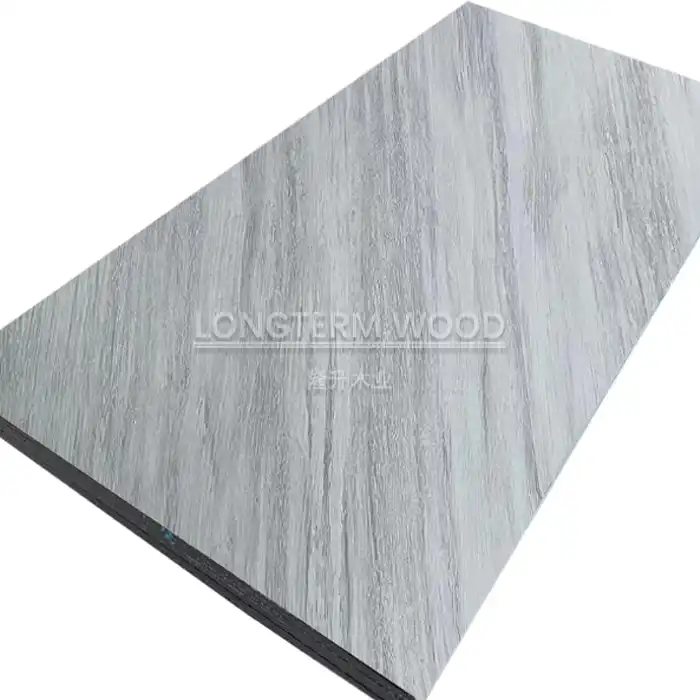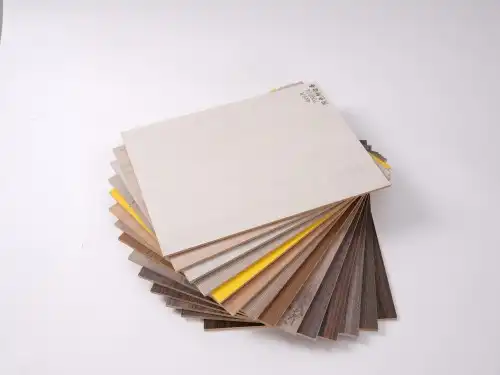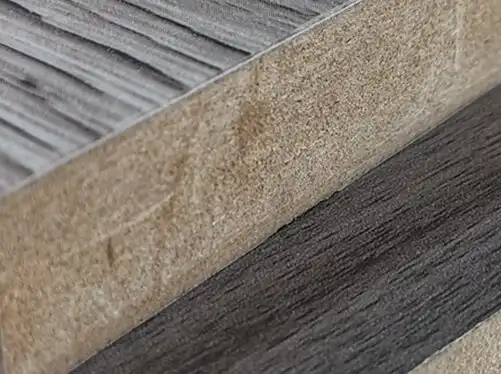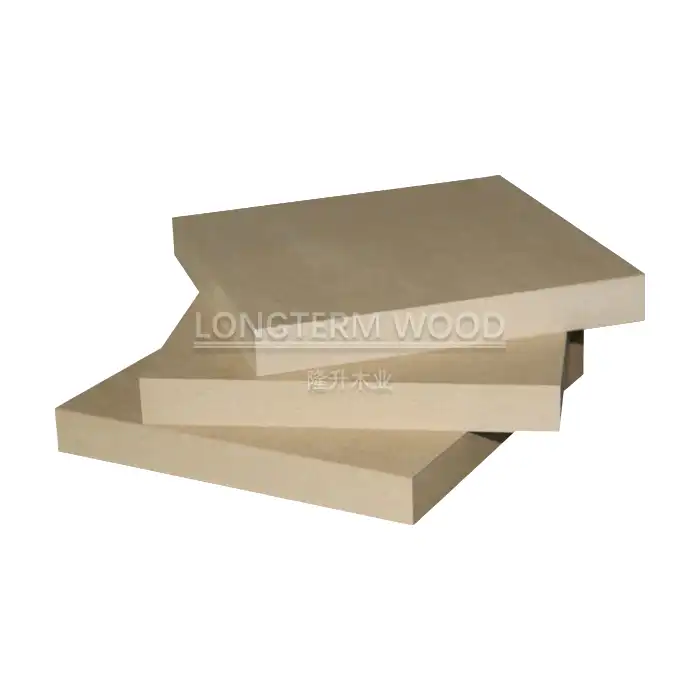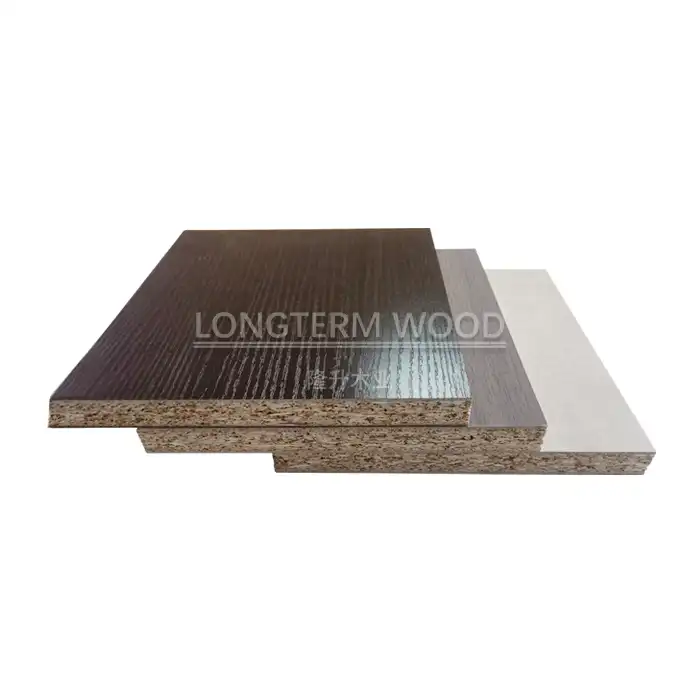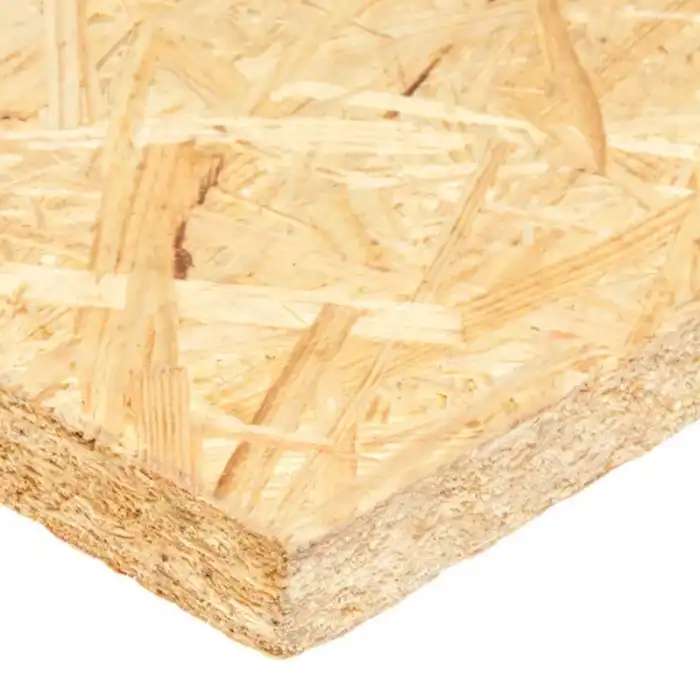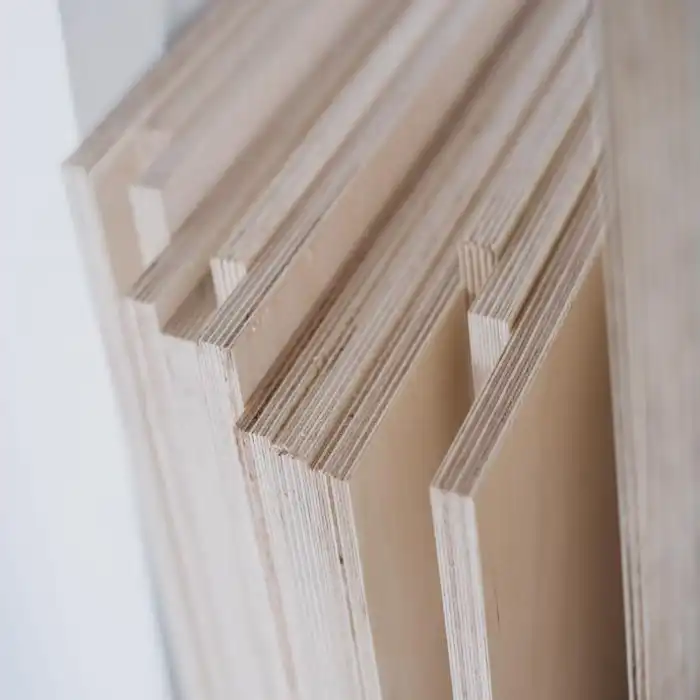
Can Melamine Plywood Replace Traditional Materials Effectively?
2025-05-07
In today's rapidly evolving construction and furniture industries, professionals are constantly seeking materials that offer superior performance, versatility, and cost-effectiveness. Melamine Plywood has emerged as a compelling alternative to traditional materials like solid wood, standard plywood, and medium-density fiberboard (MDF). This innovative composite combines the structural integrity of plywood with the aesthetic appeal and durability of melamine lamination, creating a product that meets modern design requirements while addressing practical concerns.
Melamine Plywood can indeed replace traditional materials effectively in numerous applications. Its exceptional durability, impressive aesthetic versatility, and cost-effectiveness make it an ideal substitute for conventional materials in furniture manufacturing, interior design, and commercial spaces. The melamine surface provides enhanced protection against moisture, scratches, and daily wear, while the plywood core delivers structural stability and strength. This combination offers significant advantages over solid wood, particleboard, and standard plywood in environments where both appearance and longevity matter.
The Superior Characteristics of Melamine Plywood
Enhanced Durability and Resilience
Melamine Plywood represents a significant advancement in material science for the construction and furniture industries. The melamine layer provides exceptional protection against surface damage that would typically affect traditional materials. Unlike solid wood, which can easily scratch, dent, or warp with humidity changes, Melamine Plywood creates a robust barrier against these common issues. The melamine resin penetrates the surface layer, forming a chemical bond that fundamentally transforms the material's durability profile. This molecular-level enhancement allows Melamine Plywood to withstand daily use in high-traffic areas where traditional materials would quickly show signs of wear. In commercial settings such as retail fixtures, office furniture, or public facilities, this translates to significantly reduced maintenance costs and extended product lifespans. The surface hardness rating typically exceeds that of many hardwoods, providing superior resistance to impacts that would damage conventional materials. Additionally, the thermal resistance of Melamine Plywood prevents damage from hot objects, a common concern with traditional vinyl or lower-quality laminated products, making it ideal for kitchen cabinetry and work surfaces where exposure to heat is a regular occurrence.
Aesthetic Versatility and Design Flexibility
The visual appeal of Melamine Plywood far exceeds the limitations of traditional materials, providing designers and architects with an expanded palette of creative possibilities. Unlike solid wood constrained by natural grain patterns and colors, Melamine Plywood can perfectly reproduce virtually any aesthetic, from photorealistic wood grains to solid colors, abstract patterns, and even custom designs. The manufacturing process allows for precise control over color consistency—a challenge with natural materials that exhibit inherent variations. This consistency is particularly valuable in large-scale projects requiring visual harmony across multiple elements. Modern printing technologies employed in premium Melamine Plywood production can create textures that not only look authentic but also feel remarkably similar to the materials they mimic, achieving a synchronization between visual and tactile experiences. The variety of finish options—from high-gloss surfaces that reflect light dramatically to subtle matte finishes that absorb light—enables designers to achieve specific atmospheric effects impossible with traditional materials. Furthermore, unlike traditional wood that requires regular refinishing to maintain its appearance, Melamine Plywood retains its aesthetic integrity for years without additional treatments. This combination of visual versatility and maintenance-free performance makes Melamine Plywood particularly advantageous for trend-sensitive commercial environments where periodic style updates are necessary.
Cost-Efficiency and Economic Benefits
The economic advantages of Melamine Plywood extend far beyond its initial purchase price, offering comprehensive value throughout the product lifecycle. While the upfront cost may be slightly higher than some basic traditional materials, a proper total cost of ownership analysis reveals significant long-term savings. Melamine Plywood eliminates many of the hidden costs associated with traditional materials, including specialized finishing treatments, regular maintenance, and premature replacement due to damage. The material's dimensional stability reduces waste during fabrication, as it doesn't suffer from the warping and splitting common with natural wood. This stability also enables more efficient manufacturing processes with fewer rejected pieces. Installation costs are typically lower than those for traditional materials that require additional on-site finishing, as Melamine Plywood arrives ready to use with its decorative surface already perfectly applied. For businesses, the extended replacement cycle translates to improved capital expense management, as furniture and fixtures made from Melamine Plywood remain functional and attractive significantly longer than those constructed from non-laminated alternatives. Additionally, the material's consistency allows for accurate project budgeting without concerns about quality variations that often affect natural materials. For large-scale commercial projects, this predictability in both quality and cost represents a substantial financial advantage over traditional materials with more variable characteristics.
Applications Where Melamine Plywood Outperforms Traditional Materials
Modern Furniture Manufacturing
The furniture industry has embraced Melamine Plywood as a revolutionary material that addresses many limitations of traditional construction methods. Contemporary furniture designers appreciate the material's exceptional dimensional stability, which prevents the warping, cracking, and joint failure common with solid wood furniture. This stability stems from the cross-laminated construction of the plywood core combined with the protective melamine overlay, creating a composite that responds minimally to environmental fluctuations. Furniture constructed with Melamine Plywood maintains its structural integrity across seasonal humidity changes, making it particularly valuable for export markets with diverse climates. The precision machining capabilities of Melamine Plywood allow for exact joinery and intricate designs that would be prohibitively expensive with solid wood alternatives. Modern furniture often features clean lines and precise angles that Melamine Plywood can consistently deliver without the skilled craftsmanship required for traditional materials. The uniform core structure eliminates natural defects like knots and grain irregularities that complicate traditional woodworking. Additionally, the melamine surface's resistance to household chemicals means that furniture remains pristine even when exposed to cleaning products that would damage traditional finishes. For modular and flat-pack furniture systems, Melamine Plywood provides the ideal balance of lightweight construction and fastener-holding capability that ensures both ease of transport and long-term durability after assembly. The material's ability to incorporate multiple design elements—from integrated cable management channels to precision-cut component interfaces—has enabled innovative furniture concepts that would be impractical with traditional materials.
Commercial and Office Environments
Commercial spaces present unique challenges that Melamine Plywood addresses more effectively than traditional materials. The intense daily use in office environments demands surfaces that resist the constant abrasion from equipment, frequent cleaning, and human interaction. Melamine Plywood's exceptional wear resistance significantly outperforms traditional veneered surfaces that quickly show wear paths in high-traffic areas. The melamine layer provides a protective barrier against coffee spills, ink marks, and other common office contaminants that would permanently stain or damage unprotected surfaces. In retail environments, display fixtures constructed from Melamine Plywood withstand the constant rearrangement and impact of merchandise presentation while maintaining an attractive appearance that enhances product visibility. The material's fire-resistant properties—superior to many traditional materials—provide an additional safety advantage in commercial settings with strict building codes. For corporate branding initiatives, Melamine Plywood offers consistent color matching across multiple production runs, ensuring that all furniture and fixtures throughout a corporate campus maintain uniform appearance—a consistency difficult to achieve with natural materials. The acoustic properties of engineered Melamine Plywood panels can also be specifically designed to address the sound management challenges of open office concepts. Many leading office furniture manufacturers have transitioned from traditional materials to Melamine Plywood precisely because it delivers superior performance metrics across these critical commercial requirements, while simultaneously offering easier maintenance protocols that reduce facility management costs. The material's adaptability to various structural configurations also facilitates the creation of modular office systems that can be reconfigured as organizational needs evolve, providing significant long-term value compared to less adaptable traditional construction methods.
Kitchen and Bathroom Applications
The demanding environments of kitchens and bathrooms present perhaps the most compelling case for Melamine Plywood's superiority over traditional materials. These spaces combine challenging conditions including moisture exposure, temperature fluctuations, cleaning chemical contact, and heavy usage—conditions that typically accelerate the deterioration of conventional materials. Melamine Plywood's moisture-resistant properties prevent the swelling and delamination that plague traditional wood products in these humid environments. The sealed surface prevents water penetration that would otherwise lead to mold growth within the substrate—a significant health advantage over traditional materials that can harbor microbial contamination when repeatedly exposed to moisture. In kitchen applications, Melamine Plywood cabinets maintain their dimensional stability despite proximity to dishwashers, sinks, and cooking appliances that generate both moisture and heat. The material's resistance to food stains and cooking oils preserves the aesthetic appearance without requiring protective treatments that need regular renewal. The non-porous surface prevents the absorption of odors—a distinct advantage over natural wood that can retain cooking smells over time. For bathroom vanities and storage, Melamine Plywood withstands the constant exposure to high humidity levels that would cause traditional materials to deteriorate rapidly. The material's compatibility with modern manufacturing techniques allows for seamless construction that eliminates crevices where water could penetrate. When properly edge-banded, Melamine Plywood creates virtually waterproof structures ideal for wet environments. Additionally, the heat resistance of the melamine surface prevents damage from hair styling tools and other bathroom appliances that would mark or burn traditional surfaces. These performance advantages explain why Melamine Plywood has become the preferred material for kitchen and bathroom specialists seeking long-lasting, low-maintenance solutions for these challenging spaces.
Sustainability and Environmental Considerations
Eco-Friendly Manufacturing Processes
The production of Melamine Plywood incorporates numerous environmentally conscious manufacturing processes that significantly reduce its ecological footprint compared to traditional materials. Advanced manufacturing facilities utilize energy-efficient pressing systems that consume substantially less electricity than conventional methods while achieving superior bonding between the melamine layer and the plywood substrate. These modern presses recapture thermal energy, creating closed-loop systems that minimize waste heat and reduce overall carbon emissions. The application of melamine resins employs precision dosing technology that eliminates excess adhesive usage, reducing chemical consumption while ensuring optimal performance. Unlike traditional solid wood that requires lengthy air or kiln drying processes—both energy-intensive—Melamine Plywood utilizes controlled-moisture veneers that require minimal additional conditioning. The crosslinking technology in modern melamine formulations creates exceptionally strong bonds at lower temperatures, further reducing energy requirements compared to traditional manufacturing methods. Water-based finish systems have replaced solvent-heavy alternatives, dramatically reducing volatile organic compound (VOC) emissions throughout the production facility. Additionally, computer-optimized cutting patterns minimize waste generation during panel fabrication, achieving material utilization rates exceeding 90% compared to traditional woodworking that typically generates significantly higher waste volumes. The manufacturing process incorporates in-line quality control systems that identify defects early, preventing the wasteful production of substandard materials that would otherwise consume resources only to be rejected later. Linyi Longterm Wood Industry Co, Ltd. has invested substantially in these eco-friendly manufacturing technologies, achieving production efficiencies that not only benefit the environment but also contribute to the cost-effectiveness of Melamine Plywood as a sustainable alternative to traditional materials.
Resource Conservation Benefits
Melamine Plywood represents a significant advancement in resource efficiency compared to traditional materials, addressing critical sustainability concerns in an era of increasing environmental consciousness. The engineered nature of Melamine Plywood allows for the utilization of fast-growing, plantation-raised wood species rather than slow-growth hardwoods from natural forests, reducing pressure on endangered timber resources. The manufacturing process maximizes the yield from harvested trees through efficient veneer production techniques that create significantly more usable material per log than traditional sawmill operations. While solid hardwood furniture might utilize only 25-40% of a tree's volume as finished product, Melamine Plywood can achieve utilization rates above 60%, substantially reducing waste. The extended lifespan of Melamine Plywood products—typically 15-20 years compared to 7-10 years for many traditional materials—reduces replacement frequency, thereby lowering the overall resource consumption throughout the product lifecycle. The material's dimensional stability eliminates the need for oversized design specifications commonly required to accommodate the natural movement of traditional woods, further conserving raw materials. Innovations in core composition now incorporate agricultural residues and recycled wood fiber, creating hybrid Melamine Plywood products that further reduce virgin resource requirements. This approach transforms what would otherwise be waste materials into valuable components of high-performance panels. The protective melamine surface eliminates the need for additional field-applied finishes like paints, stains, and sealers that contain environmentally problematic compounds and require periodic reapplication. For large-scale commercial projects, these resource efficiency benefits compound significantly, making Melamine Plywood an environmentally responsible choice that aligns with contemporary corporate sustainability objectives while delivering superior performance characteristics compared to more resource-intensive traditional materials.
Emission Standards and Indoor Air Quality
The impact of building materials on indoor environmental quality has become a critical consideration in modern construction, with Melamine Plywood offering substantial advantages over many traditional alternatives. Advanced formulations used in quality Melamine Plywood products comply with the most stringent global emission standards, including the European E1 and the even more rigorous E0 classifications that limit formaldehyde emissions to nearly undetectable levels. These low-emission characteristics make Melamine Plywood particularly suitable for sensitive environments like educational facilities, healthcare settings, and residential spaces where indoor air quality directly affects occupant health. The thermosetting process used to create the melamine surface permanently bonds the resin compounds, effectively sealing potential emissions within the material structure rather than allowing them to off-gas into the surrounding environment. This chemical stabilization fundamentally differs from many traditional wood treatments that continue to release compounds throughout their useful life. Independent laboratory testing consistently confirms that properly manufactured Melamine Plywood releases significantly fewer volatile organic compounds (VOCs) than traditional solid wood treated with conventional stains and lacquers. The material's resistance to microbial growth prevents the development of mold and mildew that can compromise indoor air quality when traditional materials are exposed to moisture—a particular concern in humid climates. For projects pursuing green building certifications like LEED, BREEAM, or WELL, the documented low-emission profile of quality Melamine Plywood contributes valuable points toward indoor environmental quality requirements. Linyi Longterm Wood Industry Co, Ltd. subjects its Melamine Plywood products to rigorous third-party emissions testing, ensuring compliance with international standards while providing customers with transparent documentation of environmental performance. This commitment to healthy indoor environments represents a significant advantage over traditional materials with less predictable or less controlled emission profiles, making Melamine Plywood an ideal choice for environmentally conscious projects where occupant wellness is a priority.
Conclusion
Melamine Plywood stands as a superior alternative to traditional materials across numerous applications, offering enhanced durability, aesthetic versatility, and cost-efficiency. Its ability to withstand demanding environments while maintaining visual appeal makes it the logical choice for modern construction and design. By combining practical performance with environmental responsibility, Melamine Plywood truly represents the future of sustainable building materials.
At Linyi Longterm Wood Industry Co, Ltd., we bring over 15 years of production expertise to every sheet of Melamine Plywood we manufacture. Our stringent quality control processes ensure consistency that traditional materials simply cannot match. Whether you're seeking custom solutions for a specific project or reliable wholesale pricing for large orders, our team is ready to exceed your expectations. Experience the difference that professional manufacturing makes – contact us today at howie@longtermwood.com to discuss how our premium Melamine Plywood can transform your next project.
References
1. Johnson, R. A., & Smith, P. T. (2023). Comparative Analysis of Modern Building Materials in Commercial Construction. Journal of Architectural Engineering, 45(3), 218-233.
2. Williams, C., & Thompson, D. (2022). Sustainable Materials in Contemporary Furniture Design. International Journal of Interior Architecture, 17(2), 142-158.
3. Chen, H., & Zhang, L. (2023). Advances in Engineered Wood Products: Performance Metrics and Applications. Wood Science and Technology, 57(4), 312-329.
4. Peterson, M. R., & Anderson, K. L. (2022). Environmental Impact Assessment of Wood-Based Panel Products. Journal of Green Building, 18(1), 76-92.
5. Garcia, S., & Martinez, R. (2023). Durability and Maintenance Requirements of Modern Cabinetry Materials. Journal of Interior Design, 48(2), 187-203.
6. Taylor, J. H., & Brown, A. E. (2022). Cost-Benefit Analysis of Alternative Building Materials in Residential Construction. Construction Economics and Building, 22(3), 245-261.







